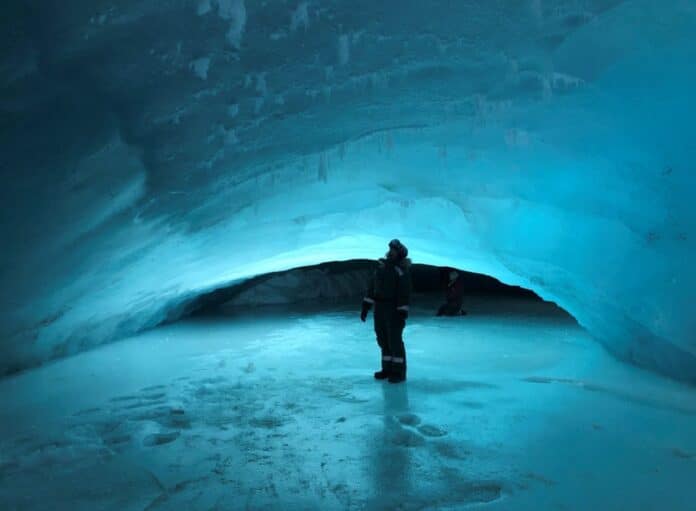Melting glaciers in the Arctic expose bubbling groundwater springs, which may provide an underutilized source of the powerful greenhouse gas methane.
Researchers from the University of Cambridge and the University Centre in Svalbard, Norway, led the investigation that discovered significant amounts of methane gas leaking from groundwater springs exposed by glacier melt.
According to the new study, these methane emissions will rise as Arctic glaciers melt and more springs become visible. This might accelerate global warming with other methane emissions from melting Arctic ice and frozen permafrost.
Gabrielle Kleber, a lead author of Cambridge’s Department of Earth Sciences research, said, “These springs are a considerable, and potentially growing, source of methane emissions, one that has been missing from our estimations of the global methane budget until now.”
Scientists fear that extra methane emissions brought on by the Arctic thaw could accelerate the warming caused by humans. The study’s springs were not previously known to be potential sources of methane emissions.
The plumbing system that supplies the methane-producing springs they discovered is concealed beneath most glaciers and draws on substantial groundwater reserves in the surrounding bedrock and underlying sediments.
Spring-like features develop where this groundwater network breaks through to the surface after the glaciers melt and retreat. The scientists discovered that the yearly methane emissions from glacial groundwater springs in Svalbard might reach over 2,000 tonnes, equivalent to 10% of the methane emissions from Norway’s oil and gas industry.
Professor Andrew Hodson, study co-author from the University Centre in Svalbard, said, “Living in Svalbard exposes you to the front line of Arctic climate change. I can’t think of anything more stark than the sight of methane outgassing in the immediate forefield of a retreating glacier.”
Methane discharge from thawing permafrost (frozen ground) has previously been the focus of investigation. Professor Alexandra Turchyn, another study co-author from Cambridge’s Department of Earth Sciences, said, “While the focus is often on permafrost, this new finding tells us that there are other pathways for methane emissions which could be even more significant in the global methane budget.”
The type of rock from which the groundwater originates was closely associated with the researchers’ localized hotspots of methane emissions. Methane is a natural gas created when organic matter breaks down during the formation of some rocks, such as coal and shale. Through rock fissures, this methane can ascend and enter the groundwater.
In Svalbard, scientists are beginning to comprehend the complicated and cascading feedback caused by glacier melt, and there are likely more outcomes like this that we have yet to discover. The amount of methane leaking from the springs we observed is likely dwarfed by the overall volume of trapped gas waiting to escape beneath these glaciers.
Hodson said, “The amount of methane leaking from the springs we measured will likely be dwarfed by the total volume of trapped gas lying below these glaciers, waiting to escape. That means we urgently need to establish the risk of a sudden increase in methane leakage because glaciers will only continue to retreat while we struggle to curb climate change.”
Journal Reference:
- Kleber, G.E., Hodson, A.J., Magerl, L. et al. Groundwater springs formed during glacial retreat are a large source of methane in the high Arctic. Nature Geoscience. DOI: 10.1038/s41561-023-01210-6
